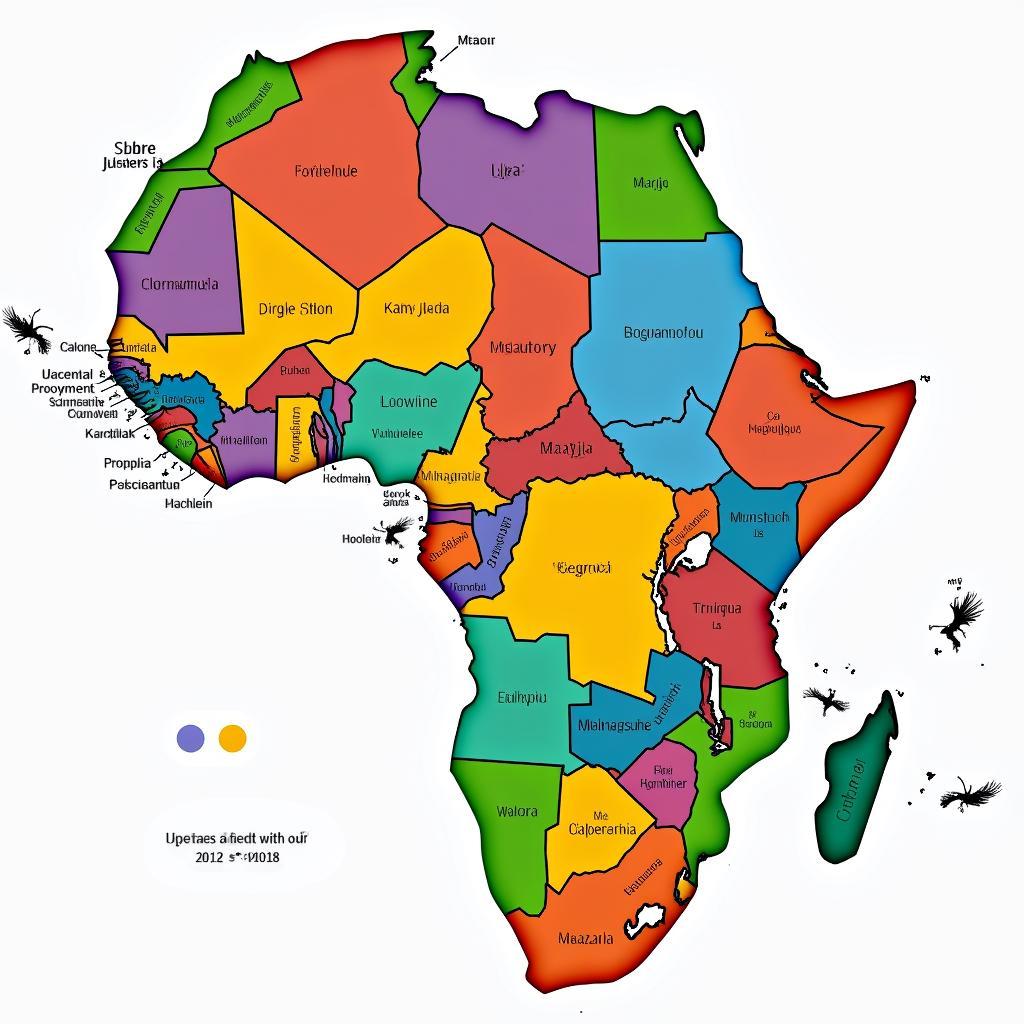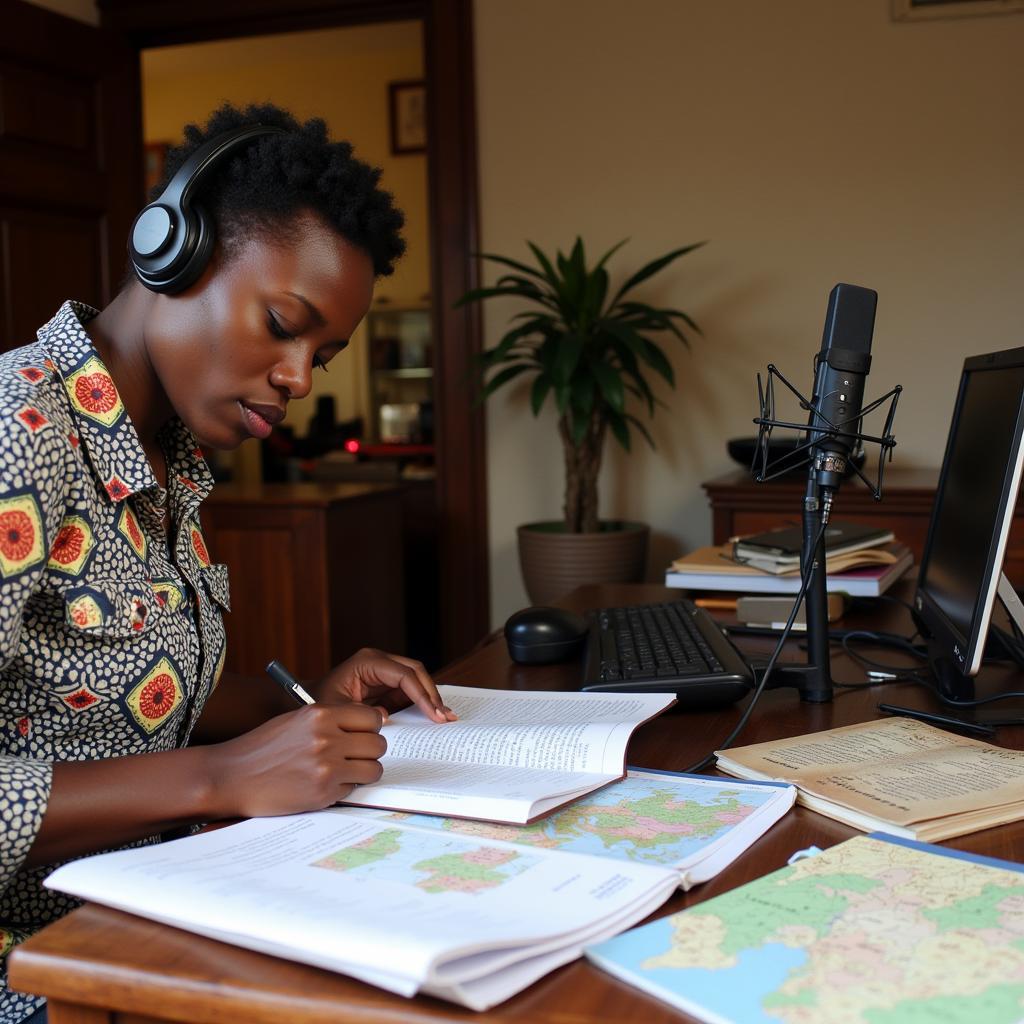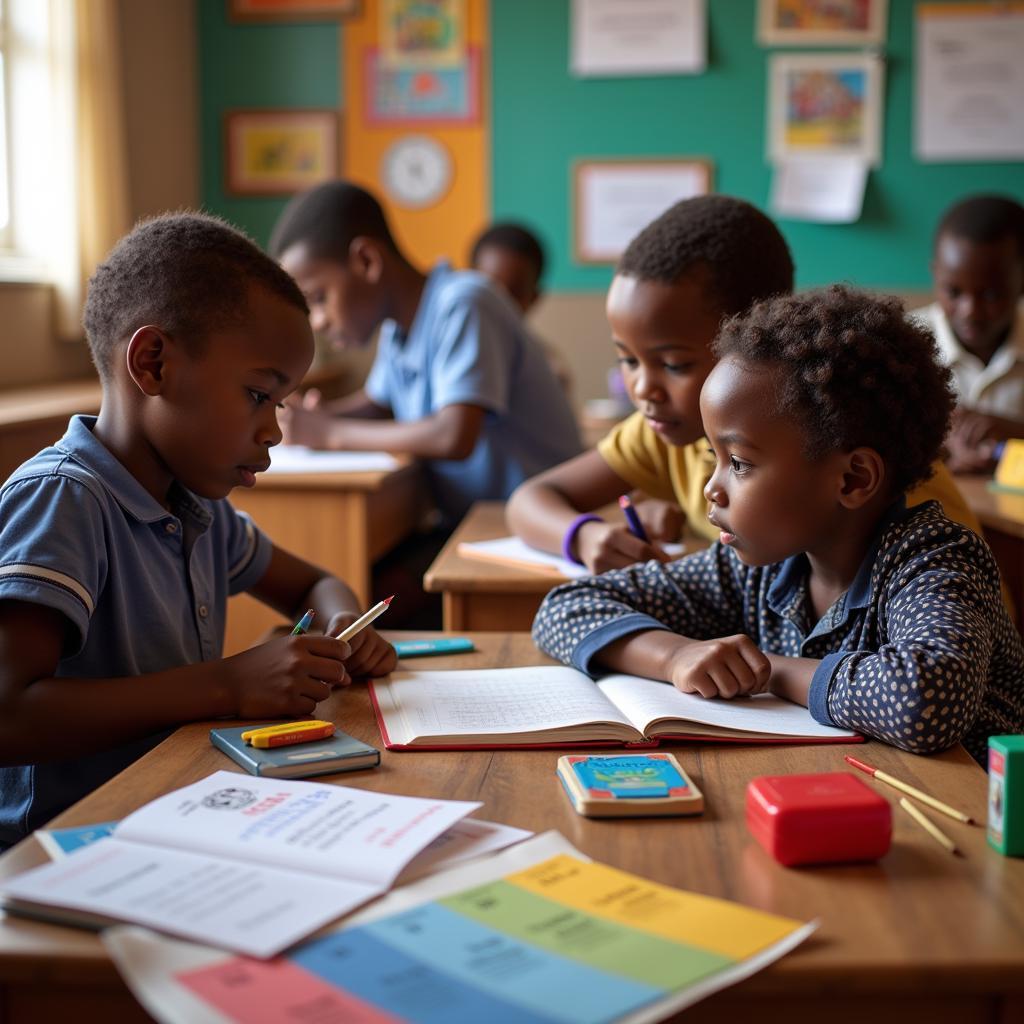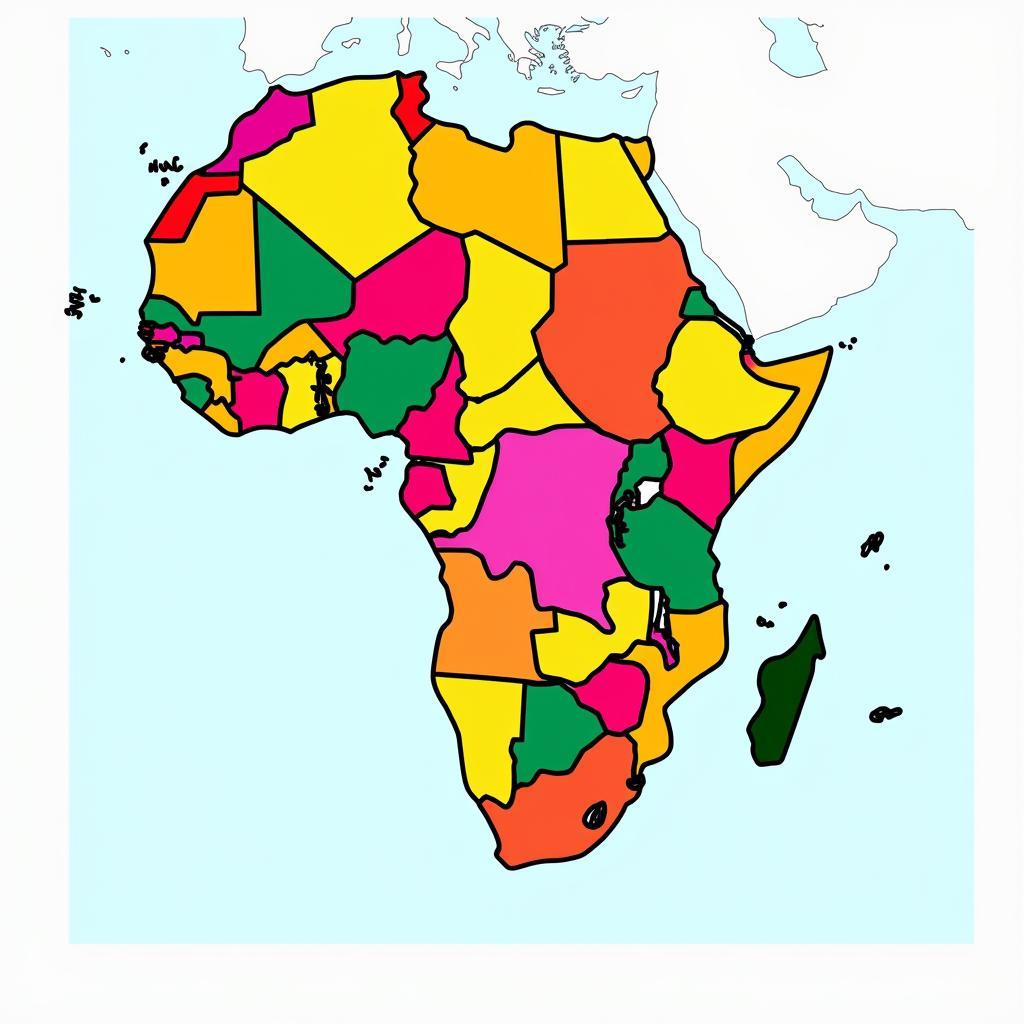Demystifying African Language Detection
African Language Detection is an increasingly important field in the world of natural language processing (NLP). With over 2,000 languages spoken across the continent, accurately identifying these languages is crucial for a range of applications, from enhancing communication to preserving cultural heritage. This article delves into the intricacies of African language detection, exploring the challenges, advancements, and its profound impact on various domains.
 Map of African Languages
Map of African Languages
Unveiling the Challenges of African Language Detection
Identifying African languages presents unique challenges for NLP researchers and developers. Unlike resource-rich languages like English or French, many African languages suffer from a scarcity of digital data. This lack of training data hinders the development of robust language models.
Limited Data Resources
The availability of large, annotated datasets is fundamental for training accurate language detection models. However, for many African languages, such datasets are either non-existent or extremely limited. This scarcity stems from historical factors, limited digitalization efforts, and the sheer diversity of languages spoken across the continent.
Linguistic Complexity
African languages often exhibit complex linguistic features that pose challenges for NLP tasks like language detection. These features include:
- Tonal variations: Many African languages are tonal, meaning that the tone of a word can change its meaning. Accurately capturing these tonal nuances is crucial for accurate detection.
- Morphological richness: African languages often have complex morphology, where words are formed by combining multiple morphemes (meaningful units). This can make it challenging to identify word boundaries and analyze sentence structure.
- Code-switching: It’s common for speakers to switch between languages within a single conversation or even a sentence. This phenomenon, known as code-switching, adds another layer of complexity to language detection.
 Linguist Working on African Language Documentation
Linguist Working on African Language Documentation
Advancements in African Language Detection
Despite these challenges, significant progress has been made in recent years in the field of African language detection. Researchers and organizations are actively working towards developing innovative solutions and overcoming data scarcity issues.
Cross-Lingual Transfer Learning
One promising approach is cross-lingual transfer learning. This technique leverages existing language models trained on resource-rich languages and adapts them for African languages. By transferring knowledge from well-resourced languages, researchers can overcome the limitations posed by limited data.
Low-Resource NLP Techniques
Another area of focus is developing NLP techniques specifically designed for low-resource scenarios. These techniques include:
- Data augmentation: Artificially increasing the size of training data by creating synthetic data points from existing data.
- Multilingual embeddings: Representing words from different languages in a shared vector space, allowing models to capture semantic similarities across languages.
Collaborative Initiatives
Collaborative initiatives are playing a vital role in advancing African language detection. Organizations like the Masakhane project are bringing together researchers and developers from across Africa to collaborate on NLP tasks, including language identification.
 African Language Technology Conference
African Language Technology Conference
The Impact of African Language Detection
The development of accurate and reliable African language detection technologies has far-reaching implications across various sectors:
Improved Communication
Language barriers can hinder communication and access to information. Language detection tools can bridge this gap by automatically identifying the language of a text or speech, facilitating real-time translation and enabling smoother cross-cultural communication.
Enhanced Digital Inclusion
Millions of Africans primarily communicate in their native languages. By enabling language detection in digital platforms and services, we can promote digital inclusion and ensure that everyone has equal access to information and opportunities.
Preservation of Cultural Heritage
Many African languages are endangered, facing the risk of extinction. Language detection technologies can play a crucial role in preserving these languages by facilitating language documentation efforts, creating digital archives, and enabling language learning resources.
Conclusion
African language detection is a challenging yet vital field within NLP. Despite obstacles such as data scarcity and linguistic complexities, ongoing research and collaborative initiatives are driving significant advancements. As these technologies continue to evolve, they hold immense potential for improving communication, fostering digital inclusion, and preserving the rich linguistic tapestry of Africa. By investing in African language technology, we can unlock a future where language is no longer a barrier to progress and understanding.
FAQ
What is the most spoken language in Africa?
While there are numerous languages spoken across Africa, the most widely spoken language is Arabic, primarily due to its prevalence in North Africa.
How accurate are current African language detection models?
The accuracy of African language detection models varies depending on the specific languages and the amount of training data available. While there has been significant progress, there is still room for improvement, particularly for low-resource languages.
What are some potential applications of African language detection in the healthcare sector?
African language detection can be used to develop healthcare chatbots that communicate with patients in their native languages, improving access to medical information and services for underserved communities.
Can language detection technologies help combat hate speech online?
Yes, by accurately identifying the language of online content, these technologies can help social media platforms and authorities better monitor and address hate speech in various African languages.
How can I get involved in supporting the development of African language technologies?
There are several ways to contribute, such as volunteering for language documentation projects, supporting organizations like the Masakhane project, and raising awareness about the importance of African language technology.
Need assistance with African language detection or other language-related services? Contact us at +255768904061, email us at [email protected], or visit our office located at Mbarali DC Mawindi, Kangaga, Tanzania. Our dedicated team is available 24/7 to assist you.

